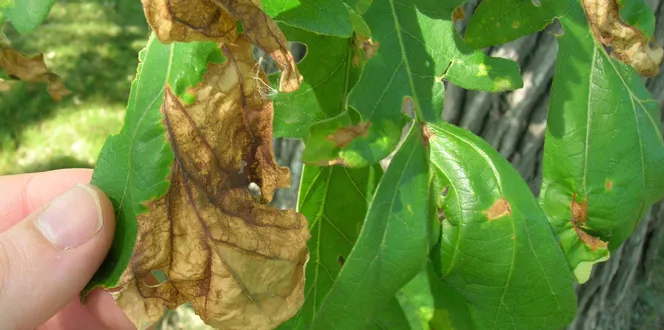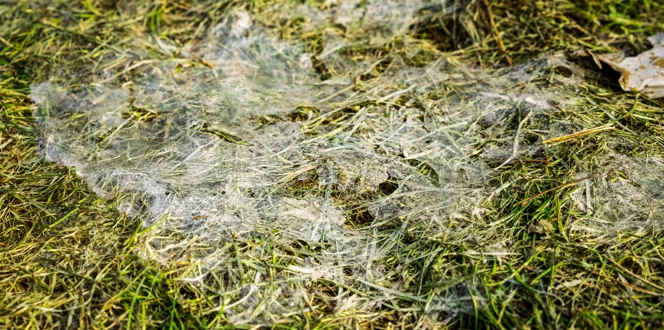We're used to tree leaves changing color throughout the year, but dusty white usually isn't in their color palette.
If you see white stuff on plant leaves, it’s probably powdery mildew. True to its name, this fungus covers plant leaves and stems with what looks like powdered sugar.
Learn more about what powdery mildew is, how it develops, and what you can do to prevent it.
Powdery Mildew 101: Life Cycle, Symptoms, Treatment and Prevention
I see white stuff on plant leaves or stems. Is it powdery mildew? What are the symptoms?
Look for leaves that have some irregular white spots or look like they've been dipped in powdered sugar. If you see that, it’s probably powdery mildew.
Confirm by checking the temperature. It thrives in dry, warm days in the 60s and 70s, followed by cool, humid nights.
What trees and shrubs get powdery mildew the most?
This list could have hundreds of different trees and shrubs on it! Below are a few that are commonly affected:
- Azaleas
- Crape myrtle
- Dogwoods
- Euonymus (Wintercreeper)
- Hydrangeas
- Lilacs
- London plane trees
- Ninebark
- Oaks
- Roses
- Rhododendrons
What's the life cycle of powdery mildew?
The fungus overwinters on plant buds, stems or fallen leaves. Then, spring's 60-degree temperatures activate the fungus, which causes spore production during damp nights.
During the day, the wind spreads the spores, which often land on nearby trees and plants. This is when you’ll see the first signs of infection.
This process usually takes a week or less and will repeat as long as mild days and humid nights continue.
How can I treat or control powdery mildew? Is there a powdery mildew fungicide?
One good thing about powdery mildew is that it's not a big threat. Dusty white leaves are about as bad as it gets.
Still, you want to help your tree look fresh again. Start by cutting off the affected leaves to reduce the chances of further infection. Then, if treatment is warranted, consider using a fungicide or horticultural oil just as symptoms appear. Continue applying every week or two until temperatures reach 80 degrees during the day and nighttime humidity drops.
Can I use vinegar to treat powdery mildew?
In place of a fungicide, some home remedies are said to curb powdery mildew symptoms. DIY treatment isn't always a surefire solution, but it's worth a shot! Research suggests this. Mix 1 ½ tablespoons of baking soda, 1 tablespoon vinegar and 1 teaspoon of dish soap into 1 gallon of water.
What are some tips for powdery mildew prevention?
Powdery mildew thrives in specific conditions, so take those away, and you reduce its chances.
While you can't dial down your local temperature or humidity level, you can cut down on the amount of moisture in your tree.
Here’s how:
- Avoid wetting the tree's leaves too late in the day.
- Prune the tree to increase air circulation and access to sunlight.
- Before winter, remove infected limbs and twigs to cut down on next year's spore spread.
- If replanting or replacing the tree is practical, consider moving the plant to a better spot. Lots of sunshine and space between trees are a must!
- If you’re planting something new, look for a species or cultivar that’s resistant to powdery mildew.





